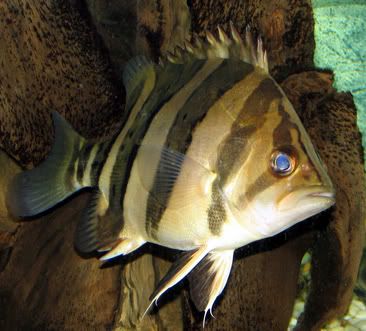King Solomon's Ring
3 posts • Page 1 of 1
King Solomon's Ring
This is a Time-Life reprint of the Konrad Lorenz classic. Lorenz of course was one of the pioneers of modern animal behavior study. Originally written in 1952, this English translation was released the same year. The title refers to the legend of the magical ring that gave King Solomon the ability to undertand animal speech.
There's much here for fans of almost any animal -- he relates anecdotes of his experiences with many different creatures -- fish, birds, water shrews, dogs, etc. Some humorous, some touching. The bird stories involved me the most. The fish anecdotes -- he was particularly fond of bettas and cichlids -- hearken back to the "balanced aquarium" days, and is a reminder that there are "other" ways to do things.
Well worth reading!
There's much here for fans of almost any animal -- he relates anecdotes of his experiences with many different creatures -- fish, birds, water shrews, dogs, etc. Some humorous, some touching. The bird stories involved me the most. The fish anecdotes -- he was particularly fond of bettas and cichlids -- hearken back to the "balanced aquarium" days, and is a reminder that there are "other" ways to do things.
Well worth reading!
-

DanRad - Senior Cichlidfish Staff

- Posts: 971
- Joined: Wed Nov 26, 2003 10:51 pm
- Location: NYC
Re: King Solomon's Ring
I'm curious what "Balanced Aquarium" is? --M
-

Mark Stone - Administrator

- Posts: 1064
- Joined: Thu Aug 05, 2004 9:30 am
Re: King Solomon's Ring
That was a concept that was still very much alive when I got into the hobby in my early teens. The idea was that you used plants to provide the necessary oxygen to the fish -- the fish in turn supplied CO2 and organic nutrients to the plants. Very often no filtration was used. I remember my 10th grade biology class had a small tank with lots of plants and just a few cherry barbs. Only light was morning sunlight from the windows across the room, plus the ambient flourescent lighting from the overheads. It was quite common for there to be a pretty good layer of "mulm" at the bottom of the tank. Algae was generally considered to be a good thing -- you just scrubbed it off the front glass to make viewing easier. Water changing was hardly ever done -- only if you ran into a serious problem. Normally you'd just top off the amount lost through evaporation. You might use distilled water to do this in order to avoid mineral build-up. No one would think the less of you if you used lighting, but incandescent bulbs could add a problematic amount of heat during the summer months -- air conditioning was not common in those days. Filtration was of course available, but mostly eschewed by "serious" hobbyists. I was never that hard core myself -- besides, I liked watching the bubbles! There were of course variations on these ideas. The concept of biotopes was quite popular, and hobbyists went to a lot of trouble to provide live foods to their charges -- more often than not collected rather than bought. Daphnia, tubifex worms, etc. Even plants were often collected from the wild (though mostly soaked for a day or to in permanganate of potash to rid them of wild nasties).
One of the things that gave me pause in this book -- which is largely a collection of anecdotes about many of his animal keeping adventures -- was his description of keeping breeding pairs of H. cyanogutattus. Have to wonder what he did about plants with those guys!
PS -- You're putting me on, right?!
One of the things that gave me pause in this book -- which is largely a collection of anecdotes about many of his animal keeping adventures -- was his description of keeping breeding pairs of H. cyanogutattus. Have to wonder what he did about plants with those guys!
PS -- You're putting me on, right?!
-

DanRad - Senior Cichlidfish Staff

- Posts: 971
- Joined: Wed Nov 26, 2003 10:51 pm
- Location: NYC
3 posts • Page 1 of 1
Who is online
Users browsing this forum: No registered users and 0 guests
